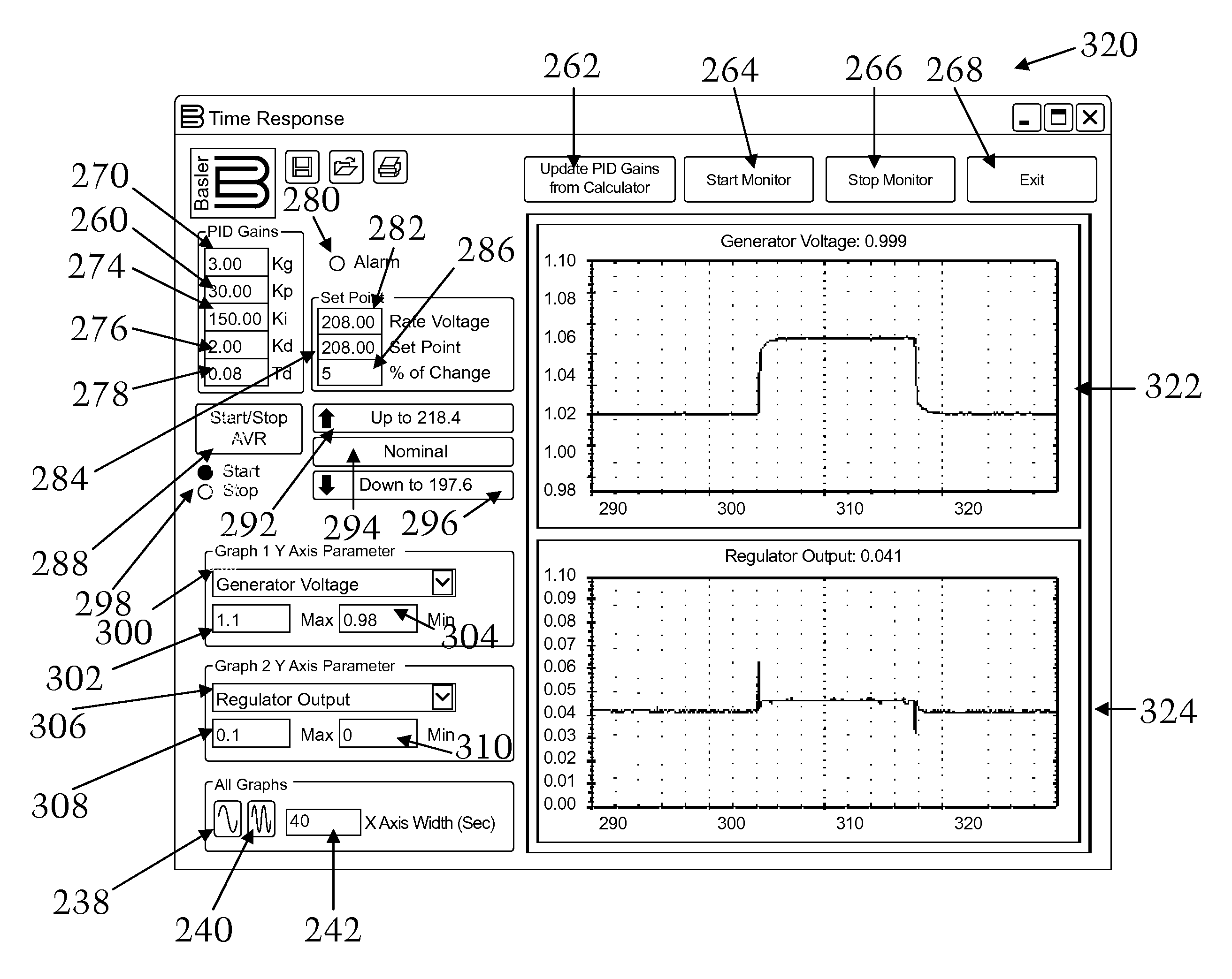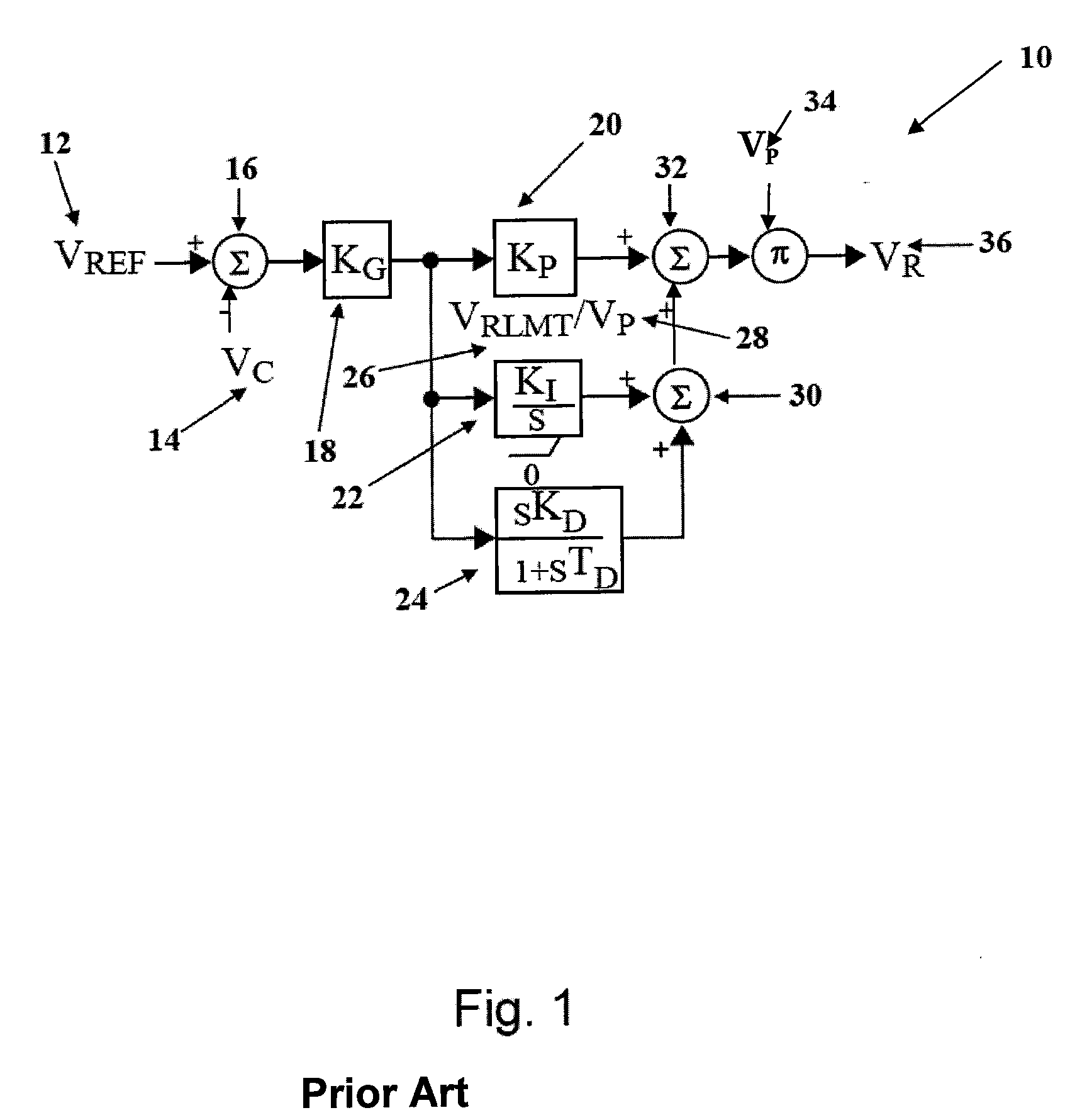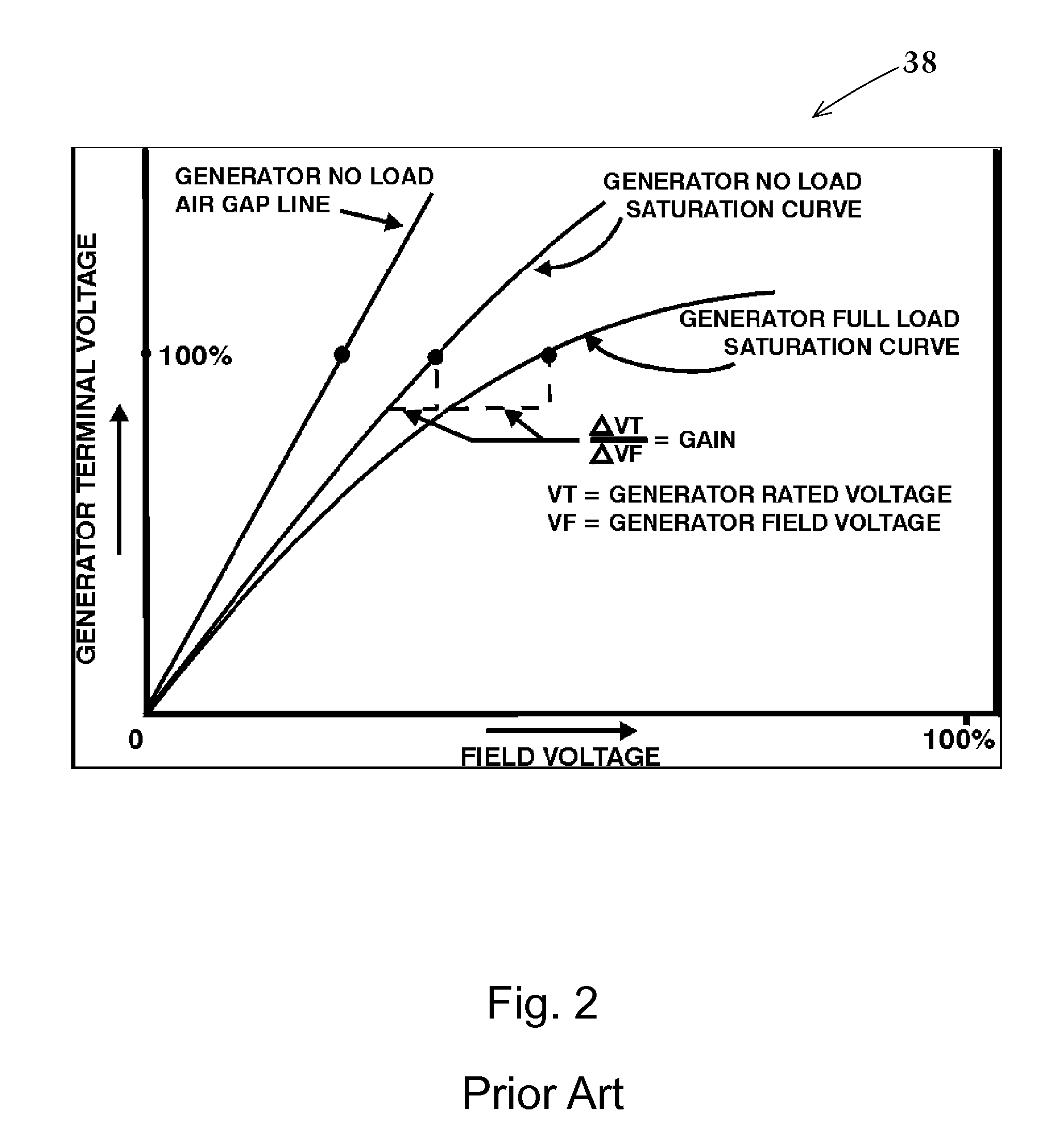Digital Excitation Control System Utilizing Self-Tuning PID Gains and an Associated Method of Use
a control system and digital excitation technology, applied in the direction of electric generator control, dynamo-electric converter control, dynamo-electric machines, etc., can solve the problems of spiking in the output of the main generator, difficult task of commissioning a new voltage regulator, and lack of information
- Summary
- Abstract
- Description
- Claims
- Application Information
AI Technical Summary
Benefits of technology
Problems solved by technology
Method used
Image
Examples
Embodiment Construction
[0030]In the following detailed description, numerous specific details are set forth in order to provide a thorough understanding of the invention. However, it will be understood by those skilled in the art that the present invention may be practiced without these specific details. In other instances, well known methods, procedures, and components have not been described in detail so as not to obscure the present invention.
[0031]A self-tuning recursive least squares algorithm is represented as follows:[0032]KS represents the system gain.[0033]TE represents the exciter time constant.[0034]Tdo represents the generator time constant.
The plant transfer function G(s) can then be expressed as:
G(s)=KS(11+sTE)(11+sTdo′)
[0035]When y(k) represents the generator output voltage at time sample k and u(k) represents the regulator output voltage at time sample k then the generator output can be expressed in a discrete form as:
y(k)=a0+a1y(k−1)+a2y(k−2)+b1u(k−1)+b2u(k−2)
[0036]In recursive least squa...
PUM
 Login to View More
Login to View More Abstract
Description
Claims
Application Information
 Login to View More
Login to View More - R&D
- Intellectual Property
- Life Sciences
- Materials
- Tech Scout
- Unparalleled Data Quality
- Higher Quality Content
- 60% Fewer Hallucinations
Browse by: Latest US Patents, China's latest patents, Technical Efficacy Thesaurus, Application Domain, Technology Topic, Popular Technical Reports.
© 2025 PatSnap. All rights reserved.Legal|Privacy policy|Modern Slavery Act Transparency Statement|Sitemap|About US| Contact US: help@patsnap.com



